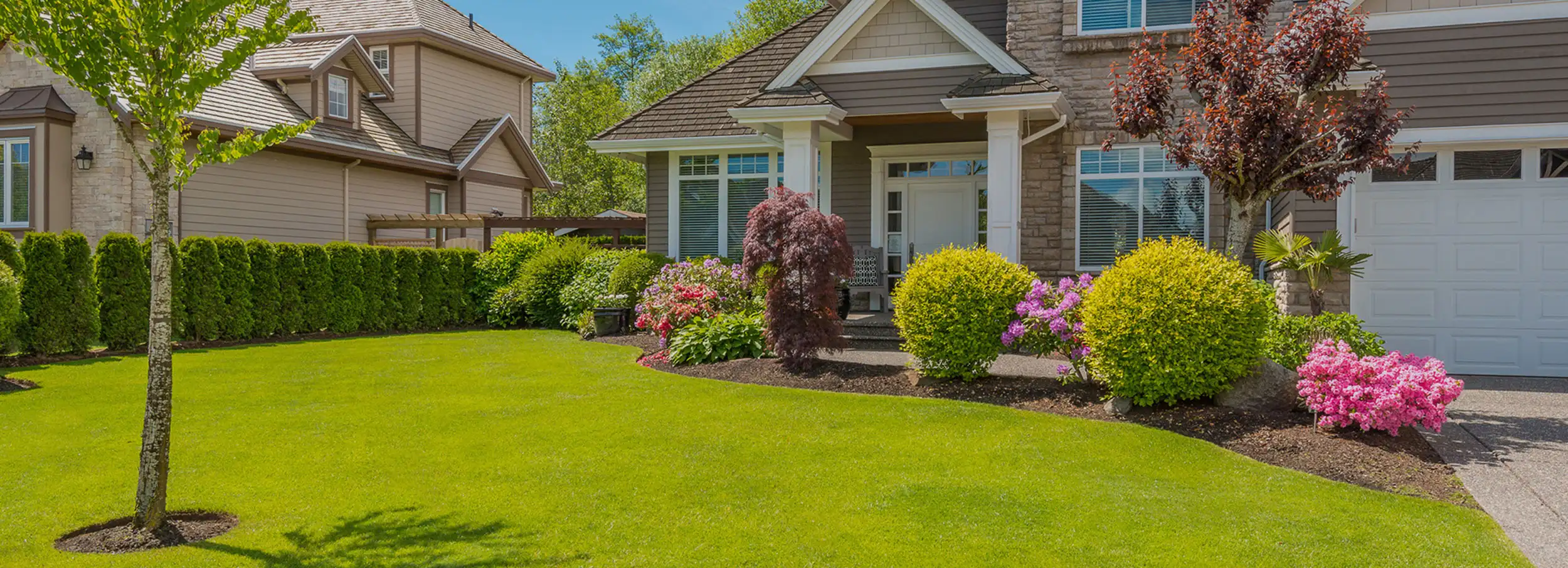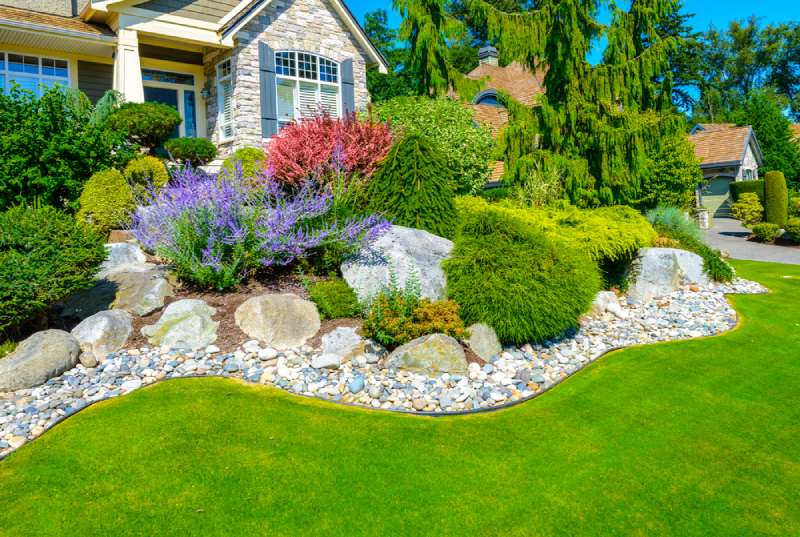Top Tips for Enhancing Your Garden with Palm Desert Landscaping Ideas
Top Tips for Enhancing Your Garden with Palm Desert Landscaping Ideas
Blog Article
A Comprehensive Overview to Creating and Implementing Effective Landscape Design Solutions
The art and scientific research of landscape design expand past mere appearances; they include a thoughtful combination of style principles, ecological stewardship, and sensible application. A detailed guide to reliable landscape design solutions starts with a comprehensive understanding of your outside room, stressing the significance of unity, percentage, and equilibrium. As we check out lasting methods and the selection of appropriate vegetation, the ramifications for biodiversity and neighborhood wellness become significantly apparent. What approaches can one utilize to make certain these landscapes not only prosper however additionally flourish attuned to their surroundings?

Understanding Landscape Style Principles
One could question what foundational aspects add to efficient landscape design. At its core, effective landscape design depends upon numerous vital concepts that guide the arrangement and option of aspects within a room. These principles consist of unity, proportion, rhythm, and equilibrium, each offering to produce a harmonious exterior atmosphere.
Unity refers to the natural relationship among different components, making sure that they function together visually and functionally. Equilibrium can be achieved with balanced or asymmetrical arrangements, enabling the landscape to really feel secure and inviting. Percentage entails understanding the scale of aspects in connection with each other and the surrounding atmosphere, advertising aesthetic harmony and comfort.

Examining Your Outdoor Space
Prior to executing the concepts of landscape design, an extensive assessment of your outside area is essential. This initial examination aids define the range of your landscape design project and ensures that your design aligns with the unique characteristics of your building. Begin by assessing the dimensions of your space, taking precise measurements to recognize the available area for various components such as gardens, outdoor patios, and pathways.
Following, observe the existing functions of your landscape, consisting of topography, dirt quality, and water drainage patterns. These aspects substantially affect plant choice and positioning. Furthermore, assess the sunshine direct exposure throughout various locations throughout the day, as this will certainly impact the types of plants that thrive in your garden.
Consider the microclimates developed by structures, trees, and various other barriers, as they can affect temperature level and wetness levels. Take note of any type of existing plants or hardscape components that you desire to eliminate or preserve. This detailed examination lays the groundwork for a well-informed and effective landscaping remedy, ensuring that your design is not just visually pleasing yet additionally functional and sustainable for years to find.
Sustainable Landscaping Techniques
Including sustainable landscape design strategies is vital for producing an environmentally accountable outside room. These methods not just promote ecological balance but likewise official source improve the functional and visual worth of a landscape. One fundamental method is the use of native plants, which require much less water and maintenance while sustaining local wildlife. Implementing effective irrigation systems, such as drip irrigation, minimizes water waste and makes sure that plants get appropriate wetness.

An additional efficient method is the tactical placement of shrubs and trees to provide natural windbreaks and color, therefore decreasing energy costs (Palm Desert Landscaping). Rainfall gardens can be incorporated into the landscape design to handle stormwater overflow effectively, filtering system contaminants before they enter rivers
Picking the Right Plant Kingdoms
Selecting the right plants for your landscape is essential to accomplishing both visual charm and eco-friendly harmony. The process starts with an understanding of your local environment, soil problems, and the specific microenvironments within your landscape. Examining factors such as sunshine exposure, dampness degrees, and existing flora will aid you select plants that thrive in your special setup.
Think about integrating native plants, as they are well-adapted to neighborhood conditions, need less upkeep, and support regional wildlife. Furthermore, selecting a diverse variety of varieties can enhance biodiversity while lowering the threat of disease and parasite episodes. It is vital to examine the growth routines, growing durations, and seasonal shades of potential plants to you could look here create a cohesive and vibrant landscape.
Moreover, assume regarding the planned use the area; as an example, if the location will experience high foot website traffic, go with resilient ground covers. By thoughtfully picking plants that align with both your aesthetic goals and ecological needs, you can produce a lasting landscape that not only improves your property yet likewise adds positively to the bordering ecosystem.

Application and Maintenance Techniques
When the like it ideal plants have actually been selected for your landscape, the focus moves to efficient application and recurring upkeep approaches. Successful installment starts with correct site prep work, which includes dirt screening to determine nutrient levels and pH, complied with by changing the dirt as needed. Very carefully organize plants according to their development practices and light needs, making certain sufficient spacing to advertise healthy development.
Watering is a crucial component of implementation. Develop a watering routine that considers the details requirements of each plant species, changing for seasonal modifications. Utilizing drip watering systems can boost water performance and reduce runoff.
Maintenance techniques have to be carried out to make certain the durability and vitality of your landscape. Regular tasks include weeding, mulching, and pruning to regulate development and avoid disease. Fertilization must be conducted based on soil examinations, supplying the necessary nutrients without over-fertilizing.
Checking for illness and pests is vital; early discovery can stop considerable damage. Finally, seasonal adjustments to maintenance regimens, such as preparing and winterizing perennials for spring development, will certainly ensure that your landscape continues to be healthy and balanced and aesthetically enticing year-round.
Conclusion
To conclude, reliable landscaping solutions need a detailed understanding of design concepts, meticulous evaluation of outside areas, and the application of sustainable methods. The option of proper plant types plays an essential function in boosting aesthetic appeal and eco-friendly durability - Palm Desert Landscaping. Successful execution and continuous maintenance better make certain the durability and vigor of landscapes. By integrating these components, landscapes can be transformed into beautiful, functional environments that advertise biodiversity and add positively to area health.
One might wonder what fundamental aspects add to reliable landscape design. At its core, effective landscape layout pivots on several vital principles that guide the plan and selection of aspects within an area.Selecting the right plants for your landscape is crucial to accomplishing both visual appeal and ecological consistency. It is important to evaluate the development routines, blooming periods, and seasonal shades of possible plants to produce a dynamic and cohesive landscape.
When the ideal plants have actually been selected for your landscape, the emphasis changes to reliable application and ongoing maintenance strategies.
Report this page